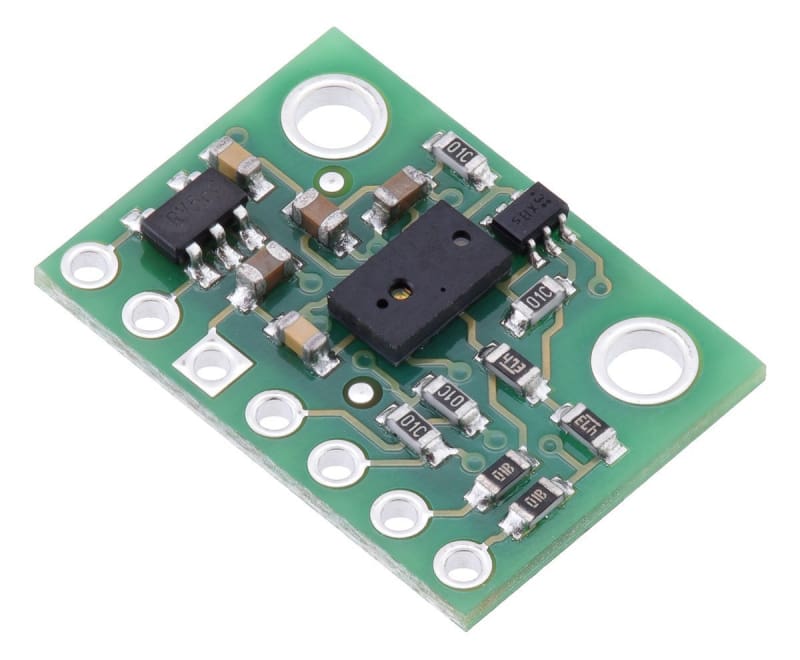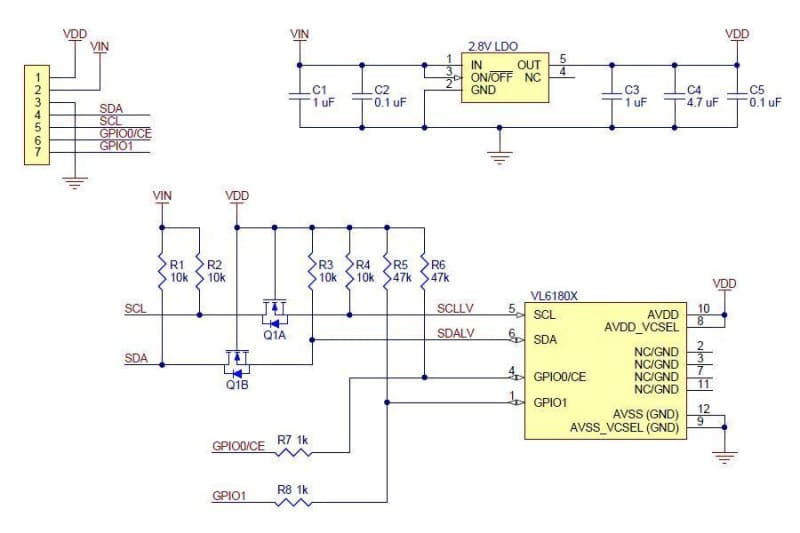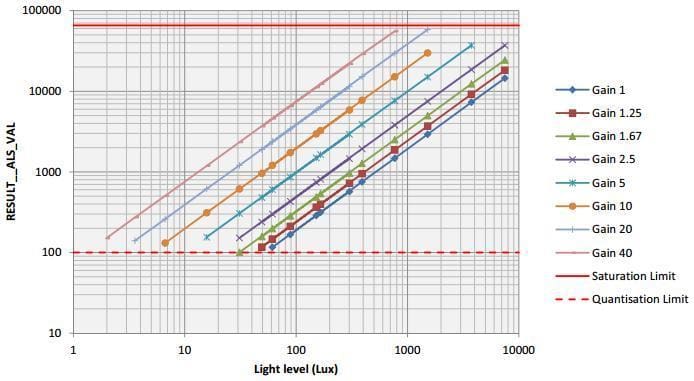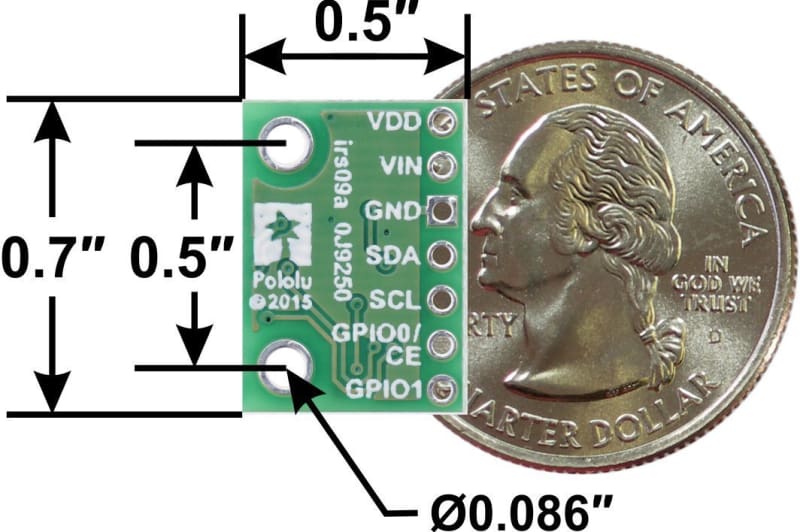VL6180X Time of Flight Distance Sensor Carrier with Voltage Regulator 60cm Max
VL6180X Time of Flight Distance Sensor Carrier with Voltage Regulator 60cm Max is backordered and will ship as soon as it is back in stock.
Couldn't load pickup availability
DESCRIPTION
The VL6180X Time-of-flight distance sensor is a carrier/breakout board for ST's VL6180X proximity and ambient light sensor, which measures distance with 1 mm resolution over a detection range of 0 cm to 10 cm or greater. The VL6180X uses time-of-flight measurements of infrared pulses to determine the range of a target object, allowing it to give accurate results independent of the target's colour and surface.
Distance and ambient light level measurements can be read through a digital I²C interface. The board has a 2.8 V linear regulator and integrated level shifters that allow it to work over an input voltage range of 2.7 V to 5.5 V, and the 0." pin spacing makes it easy to use with standard solderless breadboards and 0." perfboards.
Unlike simpler optical sensors that use the intensity of reflected light to detect objects, the VL6180 uses ST's FlightSense technology to precisely measure how long it takes for emitted pulses of infrared laser light to reach the nearest object and be reflected back to a detector, making it essentially a short-range lidar sensor.
This time-of-flight (TOF) measurement enables it to accurately determine the absolute distance to a target 0 cm to 10 cm (0" to 4") away with 1 mm resolution, without being influenced by the object's reflectance. (In some conditions, the sensor can measure and report distance to an object up to about 20 cm (8") away, depending on the target and environment.) The VL6180 also includes an ambient light sensor or ALS, that can measure the intensity of light with which it is illuminated. Ranging and ambient light measurements are available through the sensor's I²C (TWI) interface, which is also used to configure sensor settings, and two independently-programmable GPIO pins can be configured as interrupt outputs.
The VL6180X is a great IC, but its small, leadless, LGA package makes it difficult for the typical student or hobbyist to use. It also operates at voltages below 3 V, which can make interfacing difficult for microcontrollers operating at 3.3 V or 5 V. Our breakout board addresses these issues, making it easier to get started using the sensor while keeping the overall size as small as possible.
The carrier board includes a low-dropout linear voltage regulator that provides the 2.8 V required by the VL6180X, which allows the sensor to be powered from a 2.7 V to 5.5 V supply. The regulator output is available on the VDD pin and can supply almost 150 mA to external devices. The breakout board also includes a circuit that shifts the I²C clock and data lines to the same logic voltage level as the supplied VIN, making it simple to interface the board with 3.3 V or 5 V systems, and the board's 0." pin spacing makes it easy to use with standard solderless breadboards.
FEATURES
- Dimensions: 0.5"— 0.7"— 0.085" (13 mm x 18 mm x 2 mm)
- Weight without header pins: 0.5 g (0.02 oz)
- Operating voltage: 2.7 V to 5.5 V
- Supply current: 5 mA (typical; varies with configuration, target, and environment)
- Output format (I²C): 8-bit distance reading (in millimetres), 16-bit ambient light reading
- Distance measuring range: 0 mm to 100 mm (0" to 4")
Pinouts:
- VDD: Regulated 2.8 V output. Almost 150 mA is available to power external components. (If you want to bypass the internal regulator, you can instead use this pin as a 2.8 V input with VIN disconnected.)
- VIN: This is the main 2.7 V to 5.5 V power supply connection. The SCL and SDA level shifters pull the I²C lines high to this level.
- GND: The ground (0 V) connection for your power supply. Your I²C control source must also share a common ground with this board.
- SDA/SDI/SDO: Level-shifted I²C data line: HIGH is VIN, LOW is 0 V
- SCL/SPC: Level-shifted I²C clock line: HIGH is VIN, LOW is 0 V
- GPIO0/CE: This pin is configured as a chip to enable input on powering the VL6180X; the board pulls it up to VDD to enable the sensor by default. Driving this pin low puts the sensor into hardware standby. After the VL6180X powers up, this pin can be reconfigured as a programmable interrupt output (VDD logic level). This input/output is not level-shifted.
- GPIO1: Programmable interrupt output (VDD logic level). The VL6180X also drives this pin low when it is on standby. This output is not level-shifted.
RESOURCES
Picking out the important details can take some time. Here are some pointers for communicating with and configuring the VL6180X that we hope will get you up and running a little bit faster: The sensor must be initialized with a particular sequence of settings on power-up or reset. This sequence is not covered in the datasheet, but it can be found in ST application note AN4545 and design tip DT0037.
















